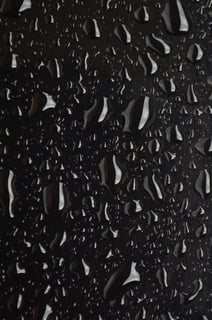Is Polyurethane Waterproof?
The short answer is yes, to a certain degree. There are several factors that make some polyurethanes more absorbent than others. Depending on the physical properties and material, thermoset polyurethanes can practically have zero water absorption compared to other known materials. In this post, we will further explain water absorption is and how it can play a role in your product's design.
 What is Water Absorption?
What is Water Absorption?
Water absorption is typically determined by the amount of water that penetrates a material. The more porous the material, the quicker the part will retain water. For example, open cell foam has tiny, breathable air pockets which allow water to permeate the material, whereas the cellular structure of closed cell foam does not allow water to easily flow through. If you want to learn more about the adaptability of polyurethane foams, click here.
Water Absorption Test
Water absorption values are often measured by the percentage of weight gain. This method typically consists of a week-long process, comparing wet weight to dry weight. Generally, results will vary depending on the type of polymer, additives, temperature, and length of exposure. However, consistent results are often achieved utilizing the ASTM-Standard D570 test.
Water Absorption Compared to Other Materials
As previously discussed, polyurethanes come in many forms including solids and foam, which display differing levels of water absorption. However, generally speaking, unlike metals, plastics, rubber and other natural materials - thermoset polyurethanes can be customized to repel most water without the effects of swelling, oxidizing or corroding. Applications that are generally submerged in water or experience high humidity often require low water absorption to maintain the parts mechanical and physical properties.
Designing with Water Absorption
Although some thermoplastics, metal, rubber, and other natural materials can absorb water overtime - this can still be highly disadvantageous to many applications. Product designers are now seeking alternative materials to avoid stiffness, durometer, and dimensional changes when exposed to water. By employing engineered thermoset polyurethanes, the rate of water absorption can be specified to fit the needs of your application. For example, Durethane® G has become a standard material for many mission-critical marine applications, due to its extremely low absorption rate and unique properties. Durethane® G provides longer component life and reduced maintenance requirements even in highly corrosive environments. To learn more about this high-strength material, click here, to download our Durethane® technical data sheets.
Conclusion
Through custom formulations, thermoset polyurethanes can have little to no water absorption compared to other known materials. Unlike thermoplastics, metals, and rubbers, thermoset polyurethanes offer product designers the option to design what they envision without compromise. If you find water absorption is a key trait in your application, complete our design tool, here, or click the button below to download our material data sheets to learn more.





